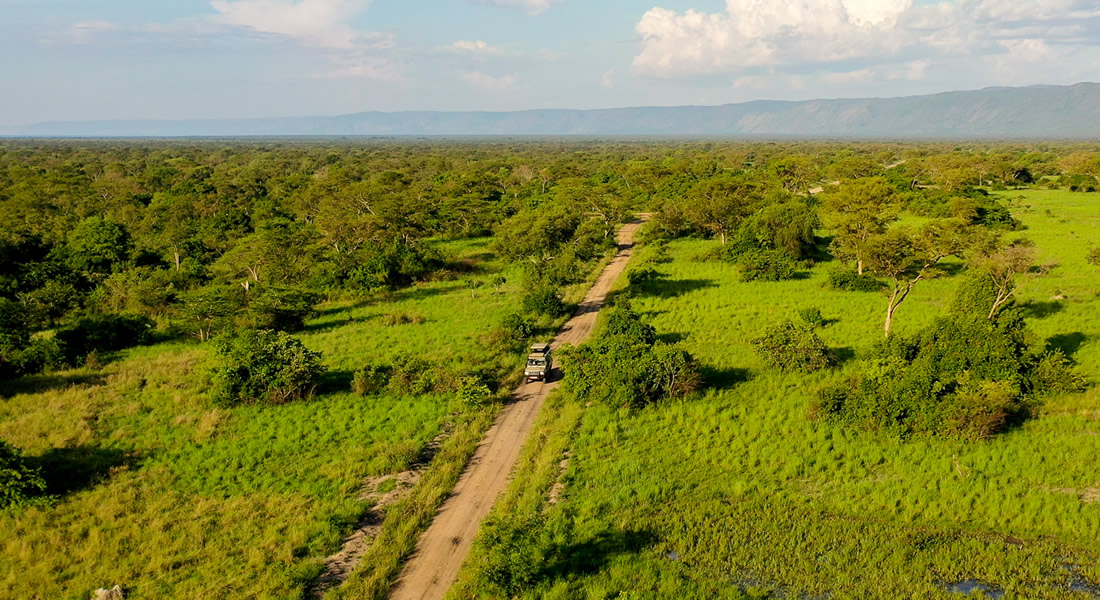Tooro-Semuliki Game Reserve was one of the first conservation zones to be declared in the south-west of Uganda Gazette in 1926, primarily to safeguard the significant antelope population that resides in this area. The reserve, which spans an area of 542 square kilometres, is located on the Albertine Rift Valley’s floor between the Rwenzori, Kijuri escarpment, and Lake Albert.

The Rwenzori Mountains, often known as the “mountains of the moon,” border the game reserve to the southwest. Lake Albert, one of the Albertine Great Lakes and a prime location for bird watching and excellent fishing, borders the game reserve to the north. The Congolese rain forest continues west of the reserve and is home to unique species that can only be found here. This stunning eco-system is made up of green savannah, woods with borassus palms interspersed, and vast wetlands that extend into Lake Albert.
The Tooro-Semuliki Game Reserve was once a well-known wildlife sanctuary in east Africa, but it was heavily looted during the civil wars. Wildlife slowly began to recover after the Tanzanian war, including lions, which may have fled the DR Congo because of political unrest. It is located 700 metres above sea level, which is a comparatively modest altitude.
Tooro-Semuliki Game Reserve is home to a variety of animals, as are Queen Elizabeth National Park and Murchison Falls National Park. These species are home to over 400 species of birds, including pelicans, the infamous shoe bill, abyssian round horn bills, herons, king fishers, and African fish eagles, as well as primates like the vervet monkey, olive baboon, red-tailed monkey, black and white colobus monkey, reedbucks, giant forest hogs, warthogs, buffaloes, and lions. With game drives in the morning and the afternoon, you may watch out for this kind of game on its three well-maintained courses.
Several activities, including game drives, nature walks, trekking the Nyaburogo Gorge, a great place for birds, primate hikes, boat excursions, and fishing on Lake Albert, may be enjoyed while visiting the Tooro-Semuliki Game Reserve. Tourists can participate in visiting villages and take in the locals’ performances of traditional dances and music.
Communities near and inside the game reserve include Karugutu-kyabandara, which is primarily made up of Bakonjo, who are traditional cultivators, south of the game reserve close to Fort Portal Town, and Rwebisengo, which is made up of Batoro-Bahima, who were once pastoralists, in the west and northwestern areas. The fishing community of Ntoroko is located on Lake Albert’s south eastern shore. In this location, fishing is the main activity.
Although the game reserve is accessible throughout the year, the ideal times to visit the park are between December and February and June and September, when it is dry. It is advised to bring rain clothing and boots because Uganda’s unpredictable downpour can occur at any moment.
Though they share different environments and animal populations, the Tooro-Semuliki Game Reserve and the Semuliki National Park appear to have been swallowed up by one another. Nevertheless, visitors often end up in the national park for its hot springs and vegetation, overlooking the fact that they are actually missing out on the game reserve’s wildlife. It is about six hours’ travel from Kampala through the Ntoroko and Kabarole areas. Both the Entebbe International Airport and Kampala-Kajansi International Airport provide chatter flights. Budget-friendly to opulent lodging is offered throughout the park; at Ntoroko, the Uganda Wildlife Authority offers bandas and campsites.
